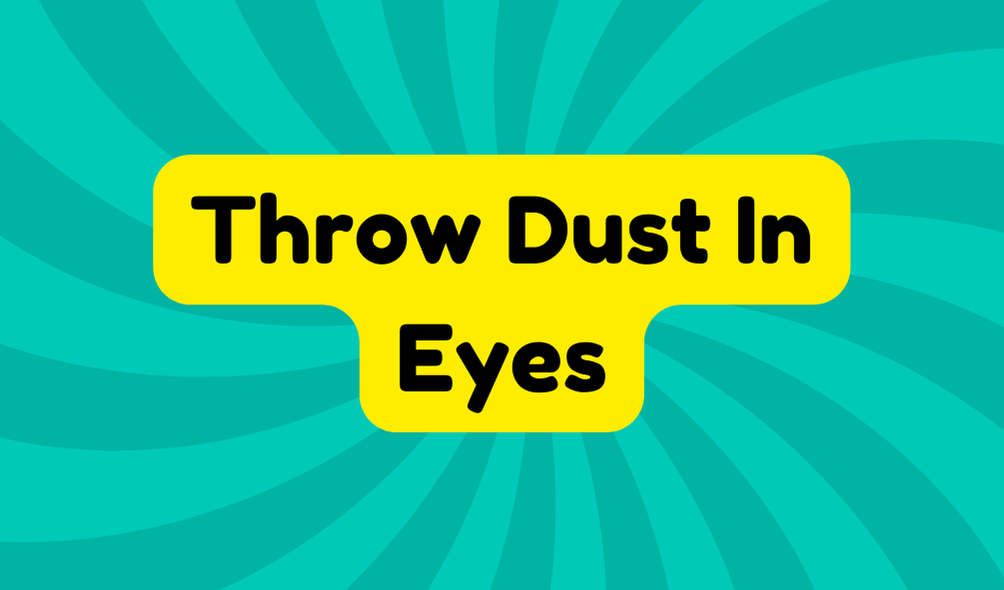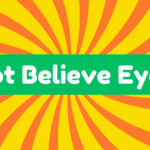"Throw dust in the eyes" refers to tactics used to deceive and mislead individuals. This expression highlights how people can be distracted from the truth, often through misleading information or manipulative techniques. Originating from warfare, it illustrates how confusion is used to gain an advantage. In today's world, marked by social media and advertising, awareness of these deceptive practices is essential. Recognizing such tactics can help one navigate a landscape often clouded by misinformation and manipulation. More insights can be uncovered on this topic.
Synonyms
Exploring synonyms for the phrase "throw dust in eyes" reveals a range of terms that convey similar meanings of deception and misleading actions. These expressions highlight the use of deceptive tactics and misdirection strategies, urging caution in interactions. Key terms include:
- Befool: To trick or deceive.
- Mislead: To guide someone away from the truth.
- Confuse: To create uncertainty and doubt.
Each synonym encapsulates the essence of manipulating perceptions, demonstrating how easily one can be misled. Recognizing these terms is integral to fostering awareness of potential deceit in personal and professional contexts.
Example of Sentences
The phrase "throw dust in the eyes" serves as a vivid reminder of the ways in which people can be deceived. Such misleading tactics and deceptive practices are all around us, often cloaked in charming façades.
Consider these examples:
- A con artist poses as a wealthy investor to swindle funds.
- A sales pitch distracts customers from hidden fees lurking in the contract.
- A politician uses flashy promises to obscure policy failures.
Each scenario illustrates how deftly individuals can manipulate perception, ultimately causing others to overlook the truth. Awareness is essential to navigate these treacherous waters.
Origin
Idiomatic expressions often carry rich historical significance, and "throw dust in the eyes" is no exception. Originating in the mid-1700s, this phrase refers to the tactic of throwing sand or dust to blind an adversary, illustrating deceptive tactics employed in warfare. Its historical context emphasizes the art of misdirection, a strategy frequently utilized in various forms of communication. The metaphor extends beyond battle, warning of the potential for deception in everyday encounters. As society evolves, awareness of such tactics becomes vital, making this phrase a pertinent reminder of the need for vigilance against misleading actions, both personal and professional.
Collocations
Collocations associated with the phrase "throw dust in the eyes" highlight the ways in which this expression is integrated into everyday language. Such phrases often reveal the prevalence of deceptive tactics and misdirection strategies in communication. Here are three illustrative examples:
- Throwing dust to distract.
- Spraying confusion over facts.
- Casting shadows to obscure truth.
These expressions serve as a reminder that manipulation is not limited to grand schemes; it permeates daily interactions, from negotiations to casual conversations. Awareness is vital, encouraging individuals to recognize when they are being steered away from clarity towards confusion, safeguarding their judgment against deceptive ploys.
How to Use in Everyday Language
Understanding how to use the phrase "throw dust in the eyes" in everyday language can illuminate the subtle ways deception infiltrates communication. This idiom serves as a reminder to remain vigilant against deceptive tactics. In conversations, it can describe situations where individuals mislead others for personal gain, such as in negotiations or sales. Recognizing these moments enhances one's communication strategies, promoting honesty over manipulation. By identifying instances when someone attempts to confuse or misdirect, individuals can foster transparent interactions. Ultimately, the phrase encourages critical thinking in evaluating motives, helping to safeguard against deceit in both personal and professional domains.
Why Is It Still Relevant Today?
The relevance of the phrase "throw dust in the eyes" persists in today's society, where deception often clouds judgment in various interactions. In an age dominated by modern deception, individuals must remain vigilant against misleading communication tactics that can obscure truth and intent. Social media, advertising, and even personal relationships can become battlegrounds for disinformation, where trust is easily compromised. This expression serves as a reminder to critically evaluate claims and seek clarity amidst confusion. By understanding how such tactics operate, people can empower themselves to navigate the complexities of contemporary life without falling victim to misguided influences and deceitful narratives.







